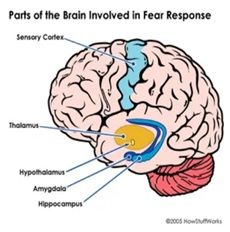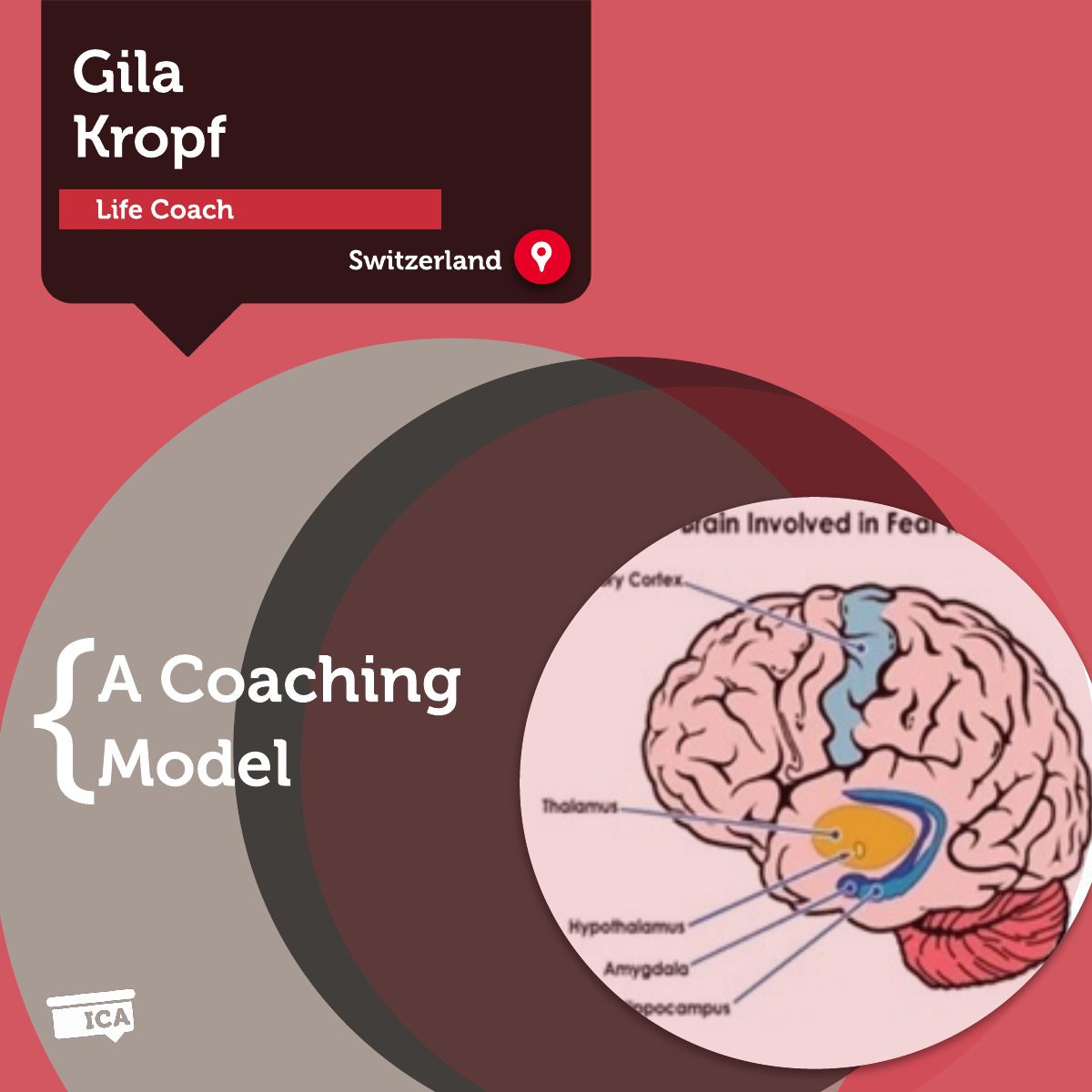A Coaching Model By Gila Kropf, Life Coach, SWITZERLAND
FLY Model
Once you have tasted flight, you will forever walk the earth with your eyes turned skyward…for there you have been, and there you will always long to return. Leonardo da Vinci
We all experience fear. Some of us experience fear in the “healthy zone”, others do not. I have chosen to focus on fear in my coaching model owing to its increasing effect on our fast-pacing modern lives. As humanity advances with serial industrial revolutions, breakthrough technologies, and not less important the global exposure to news via social networks, fear and anxiety seem to be on the rise. I have chosen a blended coaching model which relies on coaching – playing the role of the foundation for the service and consulting/mentoring as complementary support for the client, of course upon client request. I have chosen this combination since I like to accompany people from the problem presentation, exploration through awareness, and growth to implementing solutions. My wish is to accompany the client also off-sessions and be available to listen to their day-to-day journey past session.
About Fear
Fear Is Physical, Not Imaginary
Fear is experienced in our minds and can be expressed through a physical reaction in our bodies. This physical reaction which is also called “Fight or Flight” is common to human beings and animals. Upon recognition of a threat, our amygdala comes to action. The amygdala is an organ, located in the middle of our brain. Its function is to alert the nervous system setting the fear response and motion. As a consequence, stress hormones such as cortisol and adrenaline are released, our blood pressure and heart rate increase, we breathe faster…This momentum causes blood to flow to our limbs powering the body into action be it running for life or throwing punches (fight). The blood flow changes – blood flows away from our heart and into our limbs, making it easier for us to start throwing punches (Fight), or run for our life (Flight).

Fear Is Part of a Protection Mechanism
Fear is not bad for itself. It is an essential part of a protection mechanism. If we take the early times when human beings lived in caves and used to hunt animals. This way of living presents vulnerability and exposure to nature, whether animals or natural events such as storms, snow, fire, and similar. In such a setting, fear helps detect threats and dangers and, thanks to the physical processes in the human body, trigger (usually) a fast reaction. It is possible to summarize and state that fear is indeed a complex emotion that can be healthy and protect us.
Fast-forwarding to our present lifestyle, we can learn that fear can also become a pleasure. It is enough to see the demand for thrillers, amusement parks with haunted houses, fast-loopy and steep roller-coasters. However, these ‘staged fears’ release Dopamine that elicits pleasure. We know that non-staged fear does not always result in a positive outcome.
- What happens when fear affects our life in negative and inconvenient ways?
- What happens if fear paralyzes us and prevents us from doing some basic or essential tasks?
- What happens if fear stops us from exploring, growing, and using our potential?
When Fear Becomes Phobia
First, let’s differentiate between “Fear” and “Phobia”. If you find yourself recalling a recent plane crash before a flight scheduled for tomorrow and you will be inconvenienced and uneasy, it is a normal reaction. If you feel strong fear, regret for booking this trip or having to go on this trip, cannot sleep a night before, feel anxious, and hard to function during flight – then you may be experiencing more than just fear.
The FLY Coaching Model
The coaching model is blended and focuses on the event that fear is becoming a limiting factor in life and interferes with life quality. I chose the blended coaching model since I have been working as a consultant and in my private life support other people in a difficult situations. Fear may be tied with so many factors and hard to overcome. Therefore, I need to accompany my future clients to continue the good work they have done during the coaching problem and make their plans come true.
For the final work for ICA graduation, I concentrated on the fear of flying. I have been working in aviation for over 20 years and I can relate to this topic. However, the same model can be used for almost any other type of fear. Fear affects many areas in our lives and the triggers seem to be quite similar.
Fear of flying affects a high amount of population. Fear of flying as any other type of fear is at times connected to certain events that an individual might have experienced as well as to beliefs and lack of trust in the human and non-human elements that are involved in the flight process.
Fear of flying, also called “aviophobia” or “aerophobia” is related also to claustrophobia and both usually share the same triggers. People who suffer from this fear, avoid business, family, and leisure travel.
Global statistics indicate the following:
- 33% – 40% of the population experience some form of anxiety when it comes to flying
- 60% of the sufferers experience generalized but manageable anxiety pre-flight and/or during-light
- 5% – 5% of the population have a genuine fear of flying that is classified as a clinical phobia
The Blended Coaching Model Two Complimentary Offerings for the Customer:
- Coaching – coach partners with the client on a journey for creating awareness, solutions, and growth while complying with the ICF PCC markers and the coaching concept. During the coaching session, powerful questions will be asked to identify the fear and move to trust. I will implement my power tool “Fear into Trust” (see separate document).
- Consulting/mentoring – offered as complementary support, upon client wish. This part is separated clearly from the coaching part to ensure that the client understands the difference between the two services. The coach, now in the role of a consultant, supports the client further, as the client wishes, in presenting ways to achieve the client objectives which have been identified in the coaching session. Mentoring and continuous support are also offered. Availability and ongoing communication encourage the client to implement her action plan and act healthily on variations and obstacles without waiting for the very next session. Information about how fear works physically is valuable and important for the client to understand on the path to solve the problem.
The FLY Model: Finally Lift Yourself
The Model Divides the Coaching Process Into Three Steps:
Finally – the client engages with a committed coach to solve an issue. According to a survey that Captain Ron Nielsen, FearlessFlight® founder, carried out during an interview (see research project – interview an expert), people tend to seek help after 10 years on average. The word “Finally” is an acknowledgment for this long time. It is a motion towards a solution, a relief. At this stage, the exploration and awareness journey starts.
A key outcome for example. The client:
- understands that fear is natural and may not be eliminated
- recognizes that she/he is alone in this, she/he is okay
- identifies and addresses her/his fear
Lift – based on the awareness and learnings from the initial exploration phase, the client continues to explore and discover underlying reasons and beliefs, remedial measures, and maybe even growth options in terms of applying the same approach to fears other than flying
A key outcome for example. The client:
- explores her/his fear and the underlying reasons, beliefs associated with this fear
- develops awareness and understanding around her/his fear. “I know what is going on now”.
- focuses on objectives, solutions, actions – “I have a plan!” moment
Yourself– the client is now more confident of herself/himself. The consciousness of the reasons for the fear of flying and eventually connecting this specific fear to other fears such as driving a car, taking an elevator, and similar is a basis for continuous learning, growth about oneself hence – yourself.
A key outcome for example. The client:
- owns her/his plan
- acts with accountability
- feels growth while implementing the same approach to other fear areas in life, not only fear of flying flight
The consulting and mentoring part of this blended coaching model complements the coaching process with more information about fear and offers a wide variety of solutions and tools for the client to try.
Enhanced awareness by sharing with the client deeper information about the impact of fear on the decision-making process. Details about the changes in the brain activity while experiencing fear and anxiety: Some parts of the brain are indeed accelerating, others are shutting down. When the amygdala senses fear, the cerebral cortex (area of the brain that harnesses reasoning and judgment) becomes impaired. This way it is difficult and even impossible to make good decisions or think clearly and logically. Taking the haunted house as an example, one might scream and throw your hands up when approaching the house and its tenants, unable to rationalize that the threat is not real. The brain becomes foggy and fear overrides rationality. There are widely used tools such as CBT to cope with the situation. Simple journaling, repeating affirmations, and statements while flying can play a major role in coping with the situation. More interesting information can be found in my research project – and interview with Captain Ron Nielsen, founder of FearlessFlight®
Learn How to Create Your Own Coaching Model
Your Coaching Model reflects your values,
philosophies and beliefs and must communicate who you will coach
and the problems you will solve. Read more about creating your coaching model
References
US national library of medicine / National Institutes of Health
https://hms.harvard.edu/magazine/science-emotion/chill-fear
https://www.pnas.org/content/101/47/16701.figures-only
https://www.psychologytoday.com/us/basics/fear
https://www.viacharacter.org
https://www.authentichappiness.sas.upenn.edu
